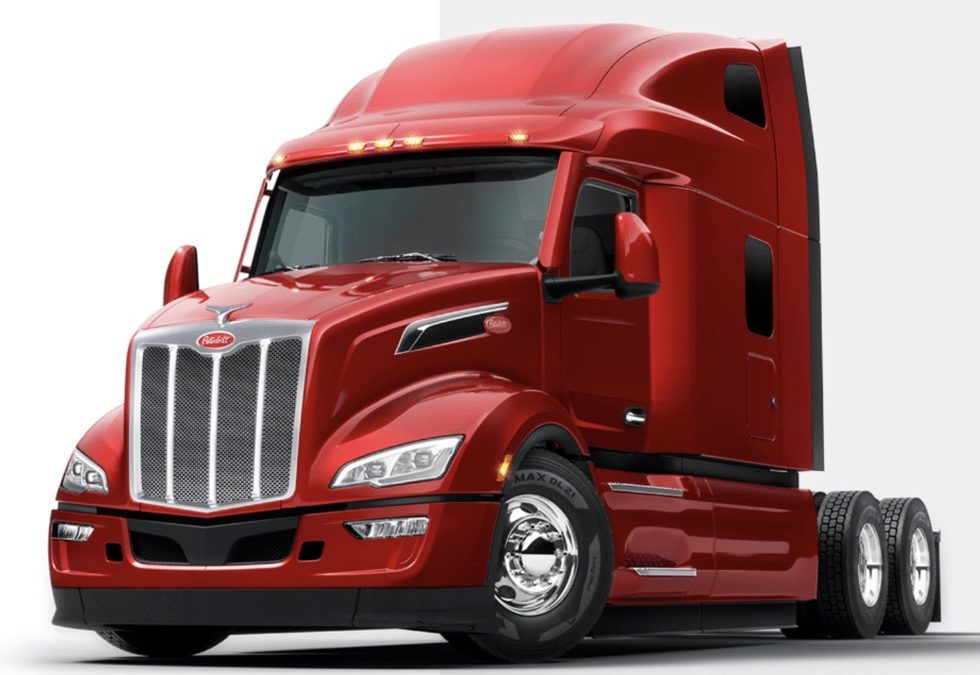Peterbilt Motors Company is a truck manufacturer owned by PACCAR. The company dates back to 1939, known as the Fageol Truck & Motor Company. It has since become one of the most prestigious truck manufacturers in the diesel industry. Peterbilt trucks are well-known for their large red oval emblem, which the company has used as its branding since 1953.
This blog post covers the modern era of Peterbilt trucks, from the early 1990s to the present. The data presented here are backed by our Diesel VIN Decoder and analyzed to recreate the same model years of manufactured trucks.
Note that model year and the actual year trucks made usually differ. The model year is usually one year before the date of manufacture. This means a truck produced in April 2022 classifies as a 2023 model year. The years given here are model years, NOT the year the truck was manufactured.
The other critical thing is that we do NOT include gliders in our year ranges. Gliders are trucks built without engines or with remanufactured engines. Gliders were a workaround around emission-rated truck engines for several years before the government closed that loophole.
Peterbilt 210
The Peterbilt truck Model 210 was officially released in 2013, though the earliest VINs we can find to date is from 2013. Model 210 was a medium-duty cab over that covered Class 6 commercial trucks. Peterbilt initially tried to import the Model 210 from their European design in the late 1990s but struggled to get it off the ground. Model 210 had only one engine option, the PACCAR PX7, a re-branded Cummins engine.
The lifespan of the re-designed Model 210 was relatively short, with the last recorded VIN dating to 2015. We checked VIN records with the NHTSA database and confirmed that the Model 210 discontinued in 2016.
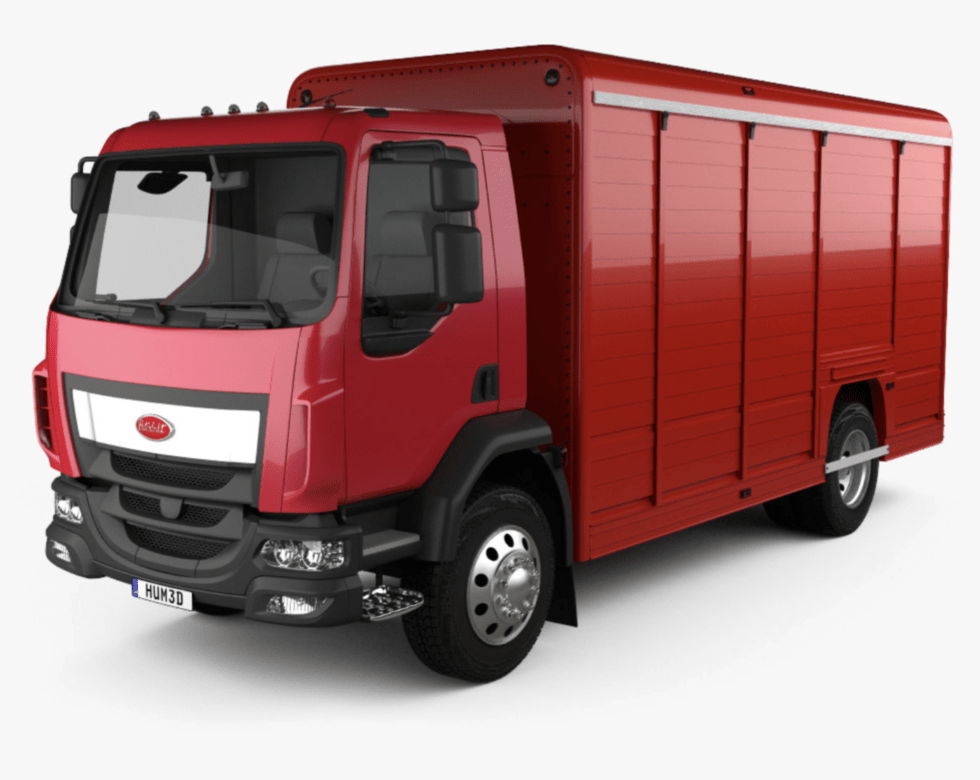
Peterbilt 220
The sister of the Peterbilt truck model 210, model 220 released in 2013. Peterbilt Model 220 was a Class 6 or 7 truck with the same engine option, the PACCAR PX7. Like the Model 210, the Model 220 imports from the European DAF truck. Peterbilt still manufactures the Model 220 today.
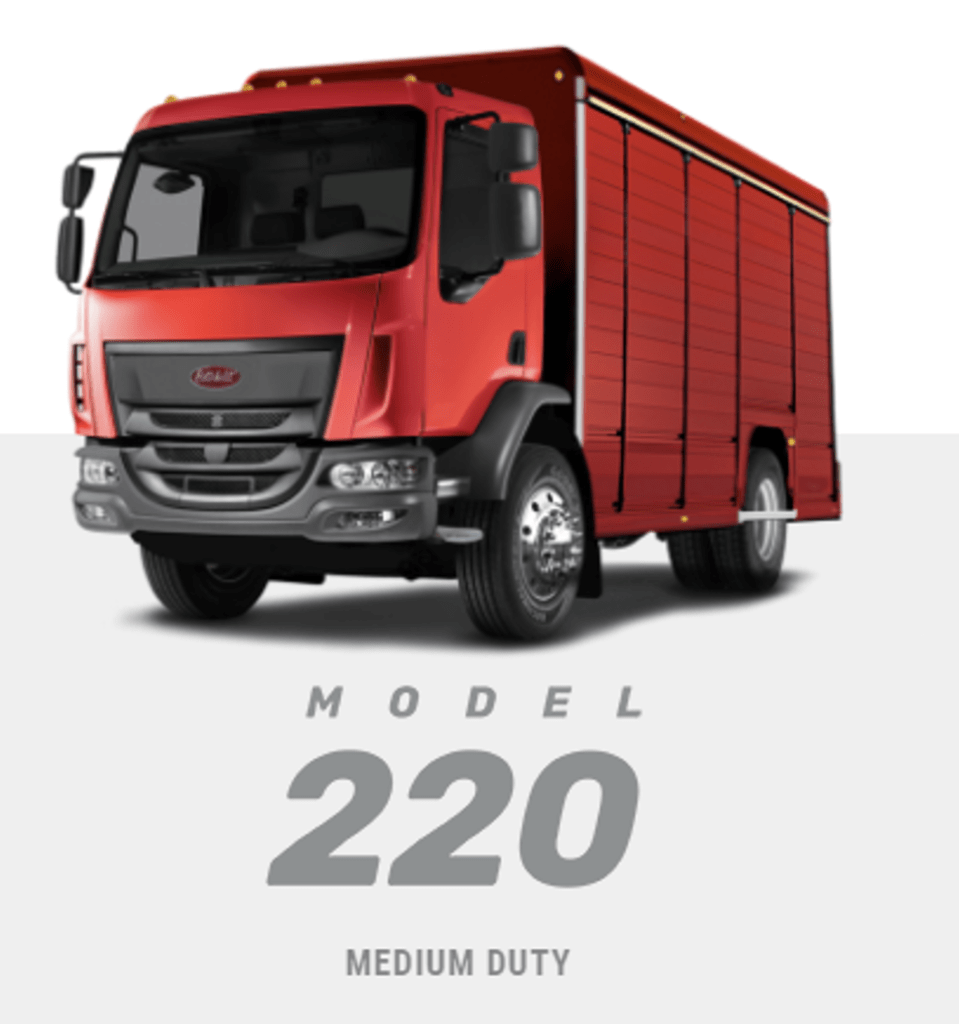
Peterbilt 320
Introduced in 1987, the Peterbilt truck model 320 was designated for waste collection, a market segment typically dominated by Mack Trucks. Due to the unique application, Model 320 was available as a left-hand drive, right-hand drive, and dual-drive with right-handed stand-up configurations. Model 320 makes use in construction, tanker, and fire service applications outside the waste collection industry. Model 320 is a Class 8 truck. It offered various engine options, including the Cummins ISX, Westport ISX12 G, PACCAR PX9, Cummins ISL G, Cummins ISX12, Cummins ISX12 N, and several others.
In 2014, Peterbilt released a re-design that included the upgraded ProBilt interior, providing numerous operator comfort enhancements and productivity and safety upgrades. The most recent VINs suggest the Peterbilt Model 320 was discontinued after the 2018 model year, leaving only gliders and export configurations.
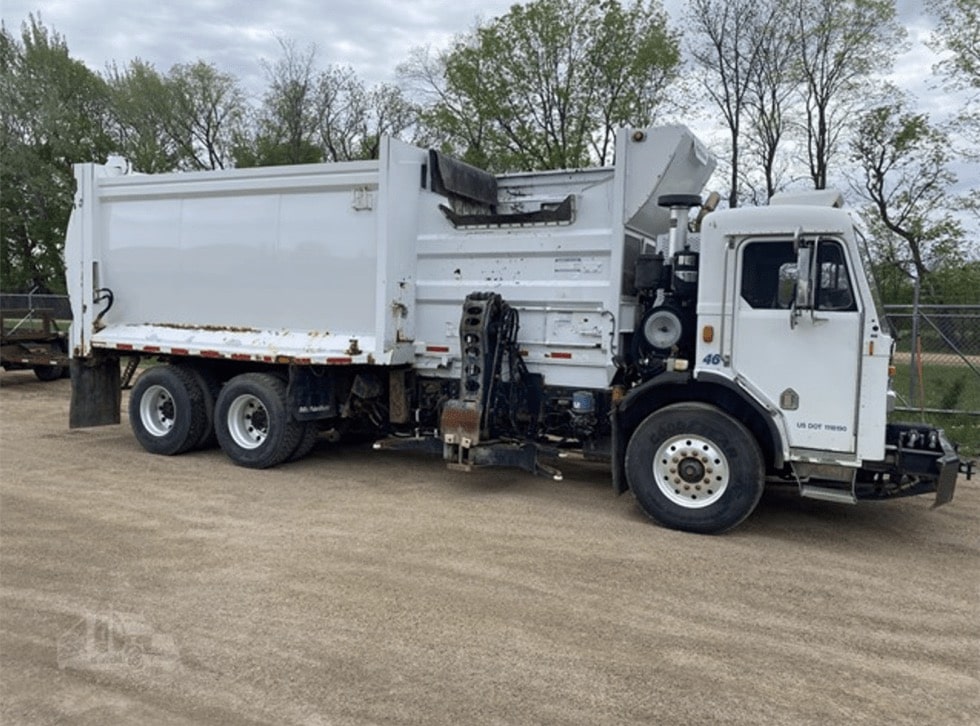
Peterbilt 325
Making headlines to the public in 2007, Peterbilt released the model 325 truck in 2008. Model 325 marked Peterbilt’s entry into the Class 5 market. This includes trucks in towing, lease/rental, pick-up and delivery, landscaping, parcel delivery, and similar applications. Model 325 ran on the PACCAR PX6 6.8L or PX 6.7L diesel engines.
As with most smaller trucks from commercial truck manufacturers, there were few “specable” options for Model 325. The Peterbilt Model 325 was replaced by the Model 535 beginning in 2022.
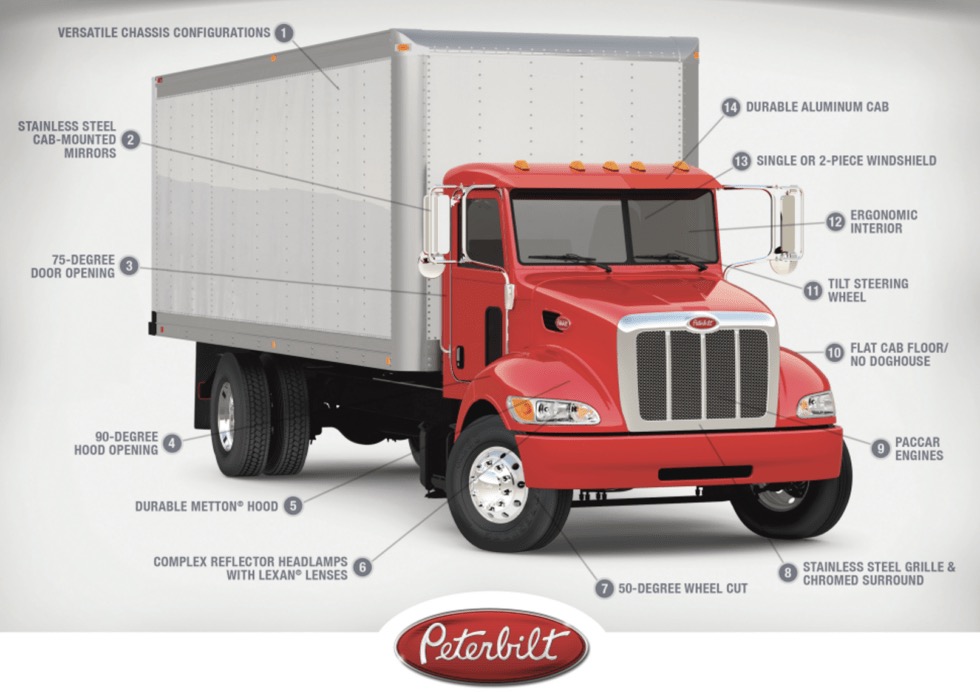
Peterbilt Model 330
Back in 1995, model 330 was the first medium truck manufactured by Peterbilt. The first generation Model 330 was only available as a Class 7 commercial truck, though customers could choose between a Caterpillar 3116 or Cummins C-Series engine.
In 2001, Peterbilt expanded the truck into the Class 6 market. Model 330 included all-aluminum cabs, tight turning radiuses, and steep hoods to improve driver visibility. The Peterbilt Model 330 was available with a wide range of engine configurations through the 2022 model year after the Model 330 finally discontinued.
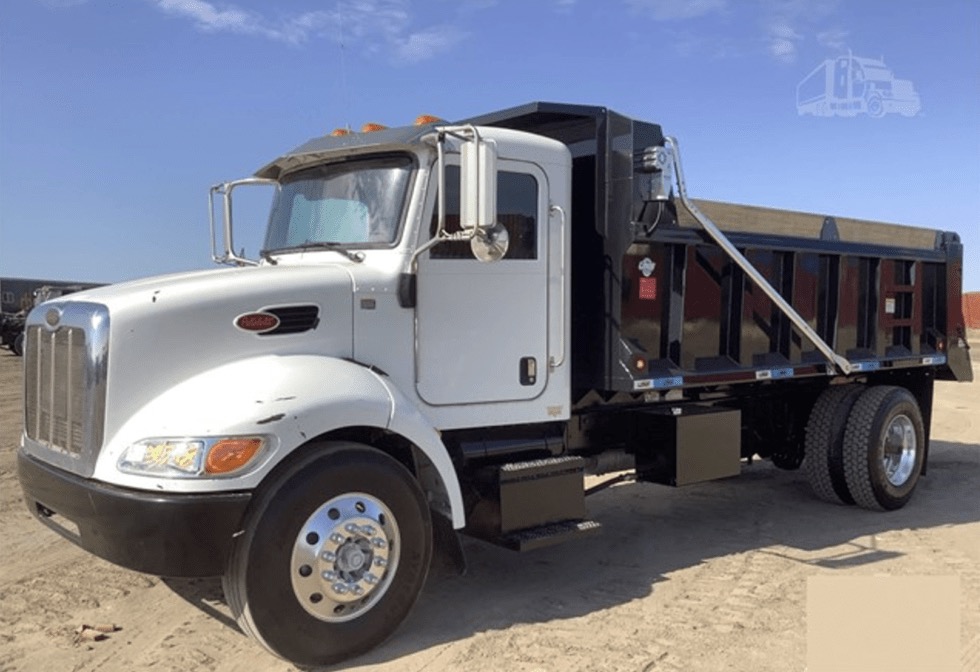
Peterbilt Model 335
As a replacement for Peterbilt model 330, model 335 launched in 2005. At that point, Model 330 was available for roughly a decade, and Model 335 offered a more attractively styled cab and interior upgrades. Model 335 was designed as a Class 6 or Class 7 truck, although customers did have the option to upgrade it to a Class 8.
Truck model 335 intended to be for local pick-up and delivery, fire and rescue, construction, beverage, refuse, and government applications. Early versions of Model 335 included the Caterpillar C7 and Cummins ISC engines. However, the PACCAR PX series engine became the standard option following its release in the late 2000s. Peterbilt discontinued the Model 335 in 2010 and replaced it with the Model 337.
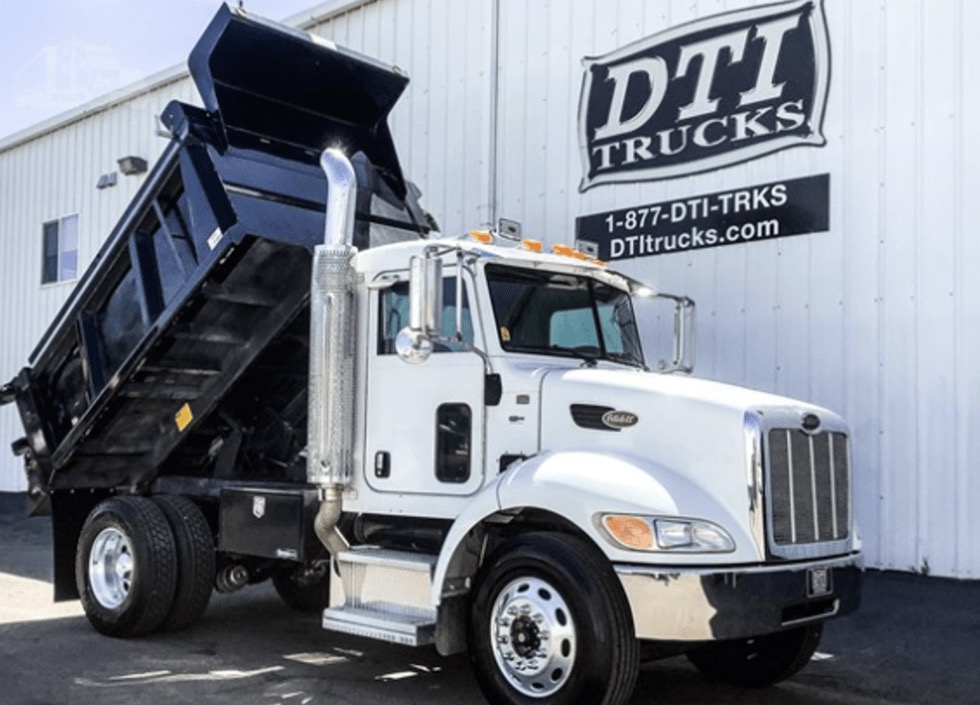
Peterbilt Model 337
Replacing model 335, model 337 introduced in 2010. Model 337 debuted as a Class 6 or Class 7 commercial truck with the PACCAR PX6 and PX8 engine standards. Later year models came equipped with the PX7 and PX9 engines, which met more stringent emission requirements.
Peterbilt Model 337 was designed for short-range services such as pick-up and delivery, beverage delivery, public utility operations, smaller dump trucks, and similar applications. Customers could order the Model 337 with Allison automatic transmissions or Eaton Fuller 5 and 6-speed transmissions. The Peterbilt Model 337 last manufactured for the model year 2022.
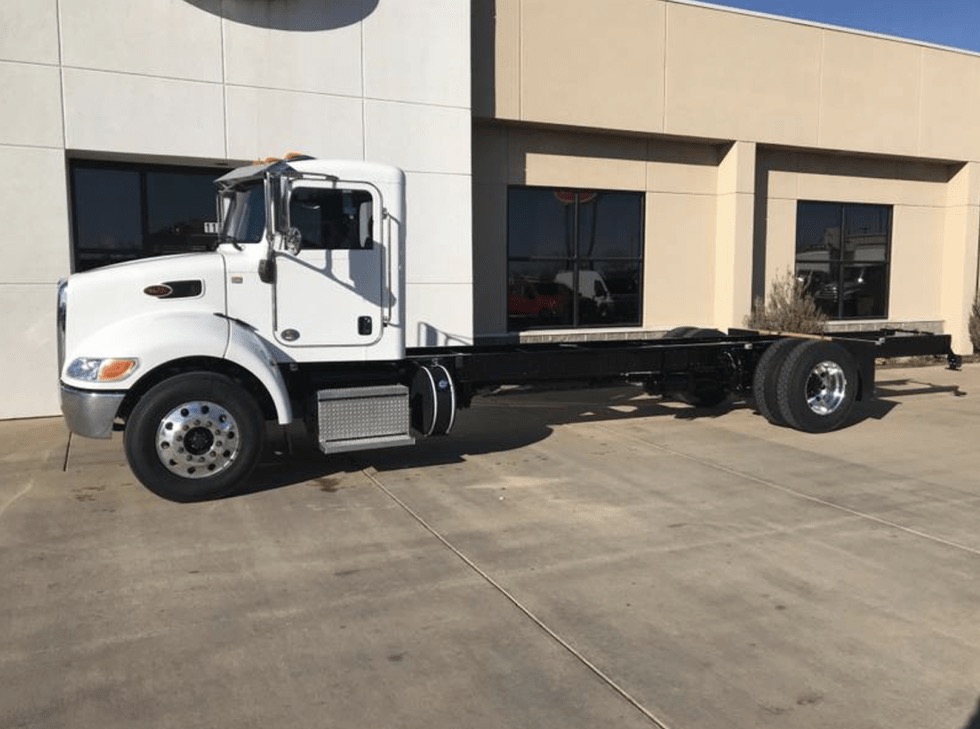
Peterbilt Model 340
Undoubtedly the shortest-lived model truck in the Peterbilt lineup, model 340, was debuted in 2007. Model 340 was built without a fifth wheel and intended to be the go-to vocational truck. Model 340 came with several options for engine configurations, including the Caterpillar C7 and Cummins ISC (later private-labeled as the PACCAR PX8 engine).
This model was only manufactured in Canada in Montreal, Quebec. The Peterbilt Model 340 discontinued after the 2010 model year.
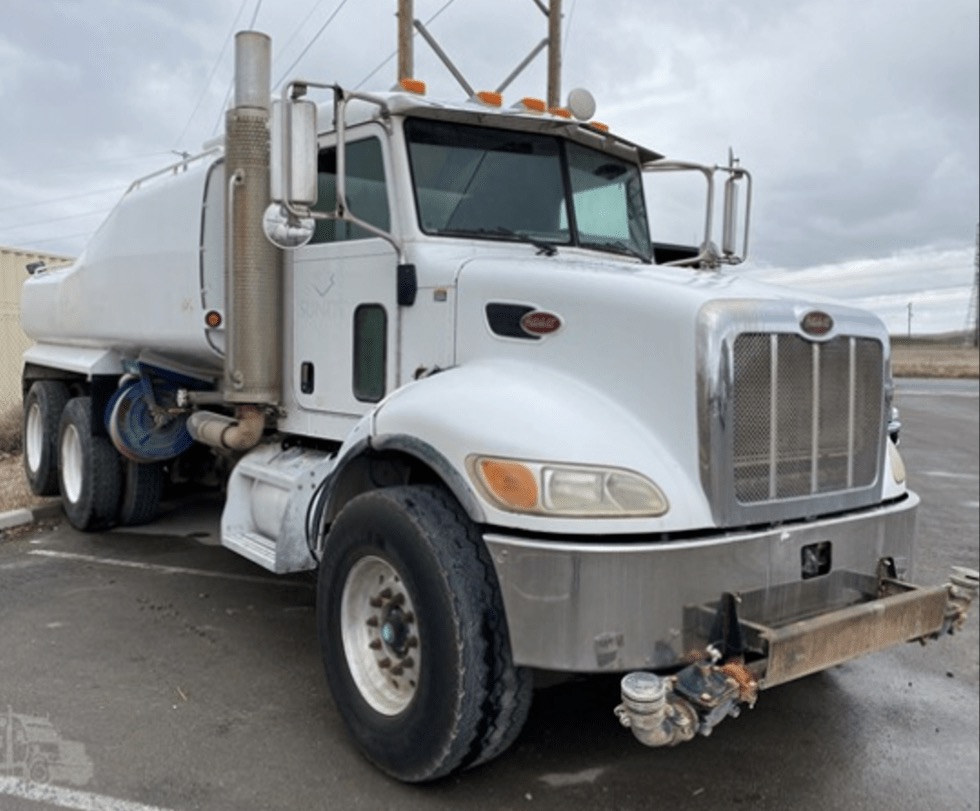
Peterbilt Model 348
The Model 348 introduced in 2010 as a replacement for model 340. Peterbilt built model 348 for the most severe and rugged operations in the vocational market. For the most grueling conditions, you can order Model 340 with gross vehicle weight ratings between 33,000 and 66,000 lbs and an all-wheel drive option.
Model 348 boasts an upgraded interior with a more ergonomic dash, LED backlight gauges, and a driver information display. The Peterbilt Model 348 was in production through the model year 2022.
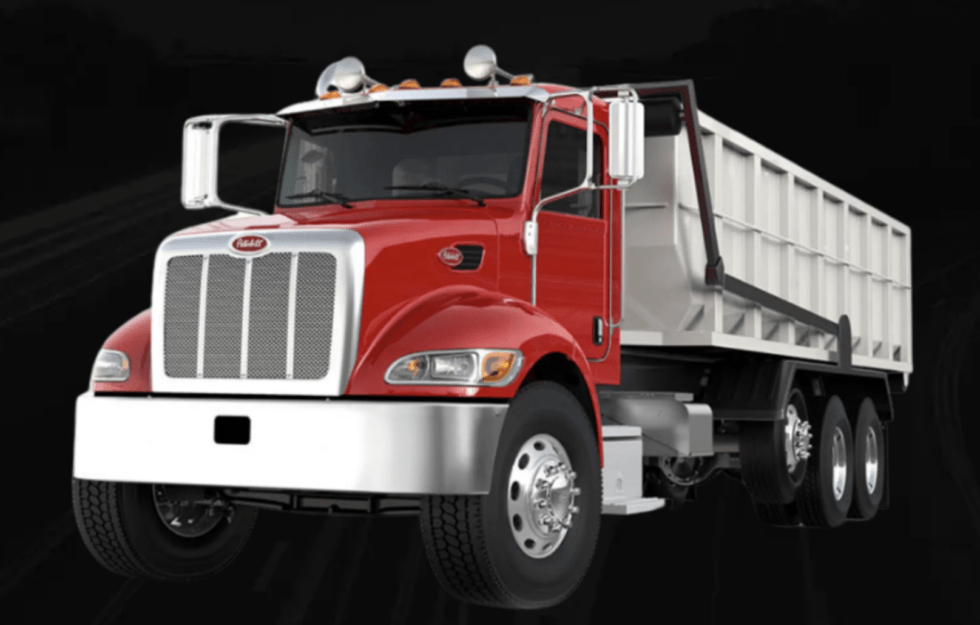
Peterbilt Model 357
The Peterbilt Model 357 was initially manufactured in 1986. Similar to Model 378, Model 357 was designed for rugged applications such as construction. Model 357 shared the various hood and axle configurations of the Model 378, but the Model 357 also offered setback axle configuration and was specified for heavier applications. The Peterbilt Model 357 produced through the model year 2007.
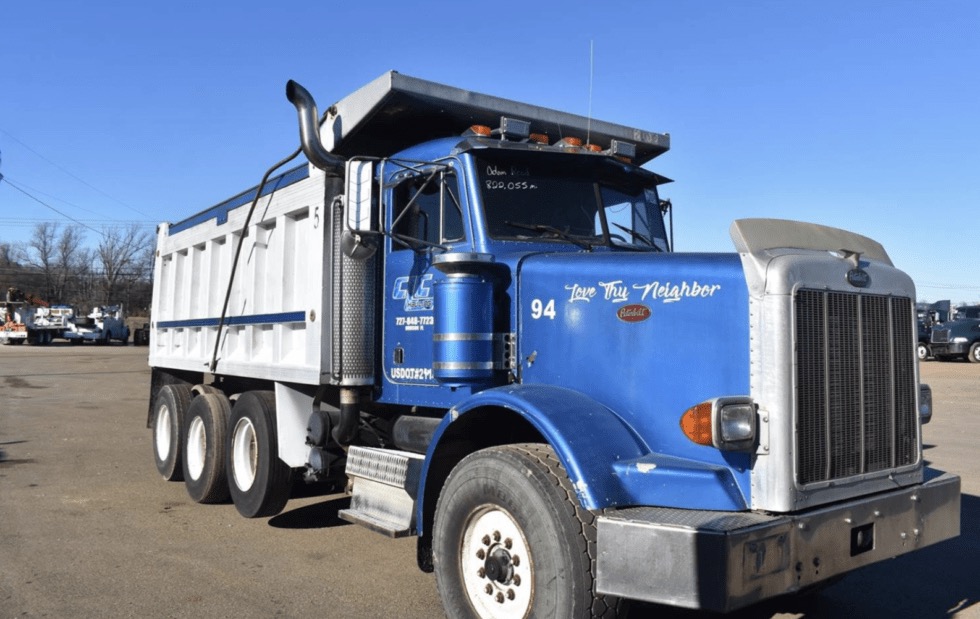
Peterbilt Model 362
Announced in 1981, model 362 came equipped with some then-unique features like three (3) front windshield wipers. Released in an era when consumers had several commercial truck engine choices, Model 362’s usually contains Caterpillar, Cummins, and Detroit Diesel engines. The Model 362 is less well-known because the cab-over (also known as the COE – Cab Over Engine) isn’t widespread in the United States for Class 8 trucks, but a Model 362 can is in the Pixar movie “Cars.”
Unfortunately, this model officially discontinued in 2005, but we have yet to see a VIN past 2003. This is because few Model 362’s produced after 2004 when updated emission standards took effect. Model 362 was the last Class 8 cab-over truck that Peterbilt would build.
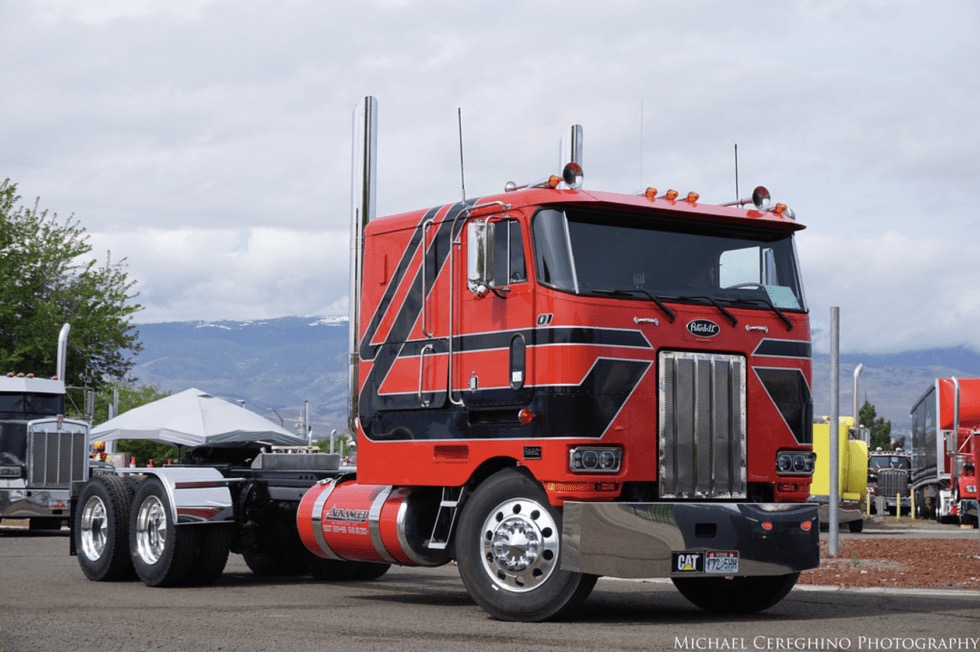
Peterbilt Model 365
Officially beginning manufacture in 2007, the Peterbilt model 365 arrived. Model 365 is a Class 8 vocational truck suited for concrete mixer trucks, construction, and other heavy-haul work applications. Model 365 could be configured with the steer axle set back or forward and featured Front Engine Power Take Offs (FEPTO) or Rear Engine Power Take Offs (REPTO).
While made for vocational use, Model 365 could still be ordered with a sleeper. Model 365 has a bumper-to-back cab length of 115″ and is the replacement for Model 357. The Peterbilt Model 365 remains in production today.
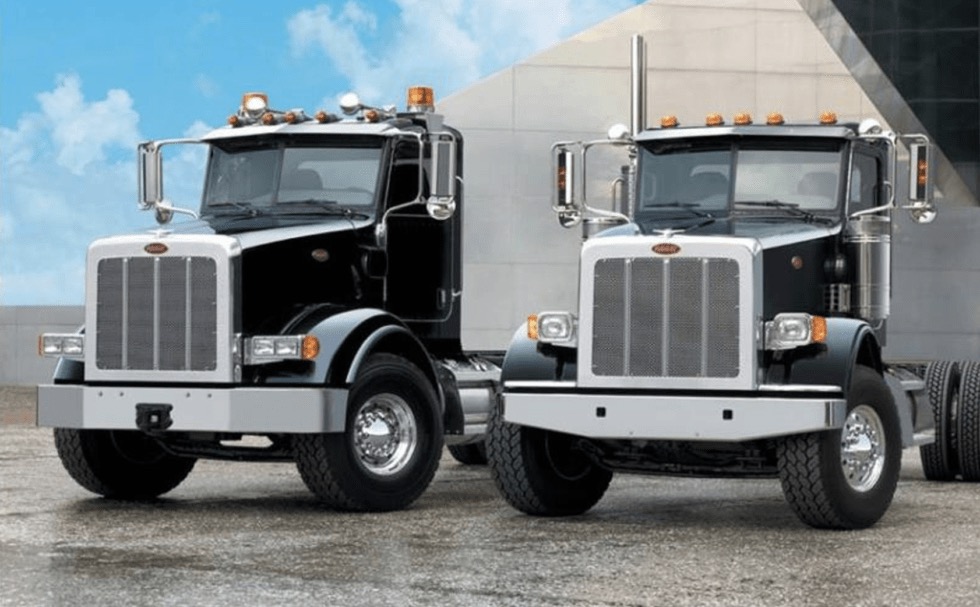
Peterbilt Model 367
Made in 2007 as a replacement for Model 378, model 367 hit the markets. Model 367 is the sister truck of Model 365, the main difference being that Model 367 has a 123″ bumper to back cab measurement, making it approximately 8″ longer than Model 365. Model 367 is intended for use in a highway configuration and has external air cleaners. Model 365 does not.
Often, Model 378 has a body on the back as opposed to Model 367, which features a fifth wheel to tow a trailer. Peterbilt still manufactures Model 367 with different engines than the 2007 models.
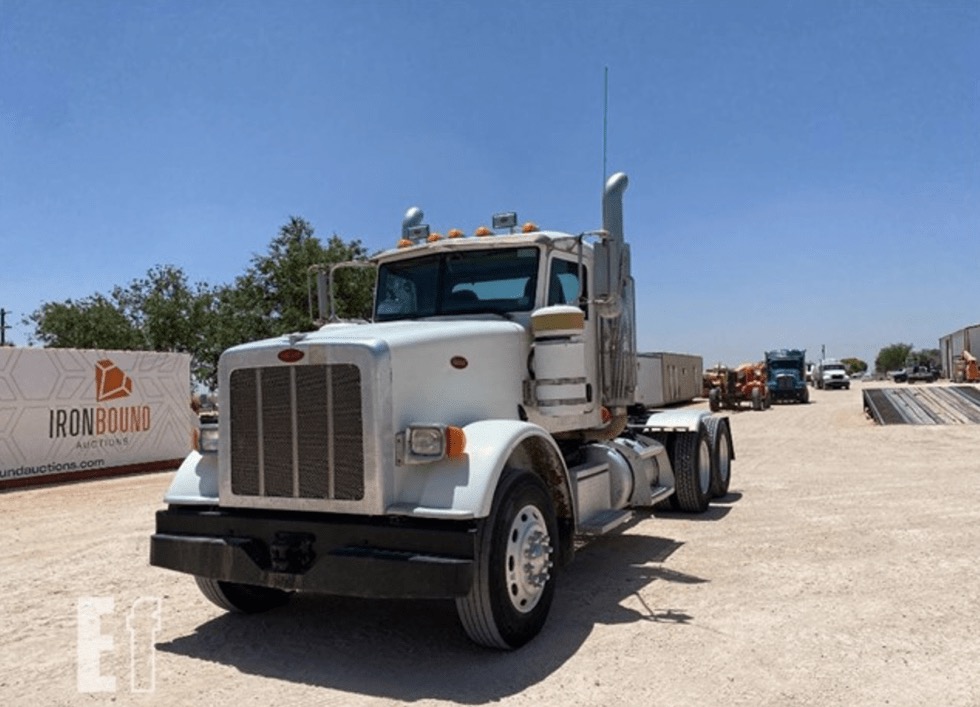
Peterbilt Model 375
Entering the market around 1988, model 375 was Peterbilt’s first foray into more aerodynamic conventional truck models. Up to this point, Peterbilt had focused more on trucks geared towards owner-operators, with large, square nose front ends and vocational markets. Model 375 featured a more sloped hood and was effectively the day cab version of Model 377, intended to carry lighter loads.
Typically running on smaller engines such as the Caterpillar 3306 or 3176 and the Cummins M11, the Peterbilt model 375 ceased production around 1996. This was when it was replaced by Model 385 and Model 387. Model 375 was not a very popular truck model.
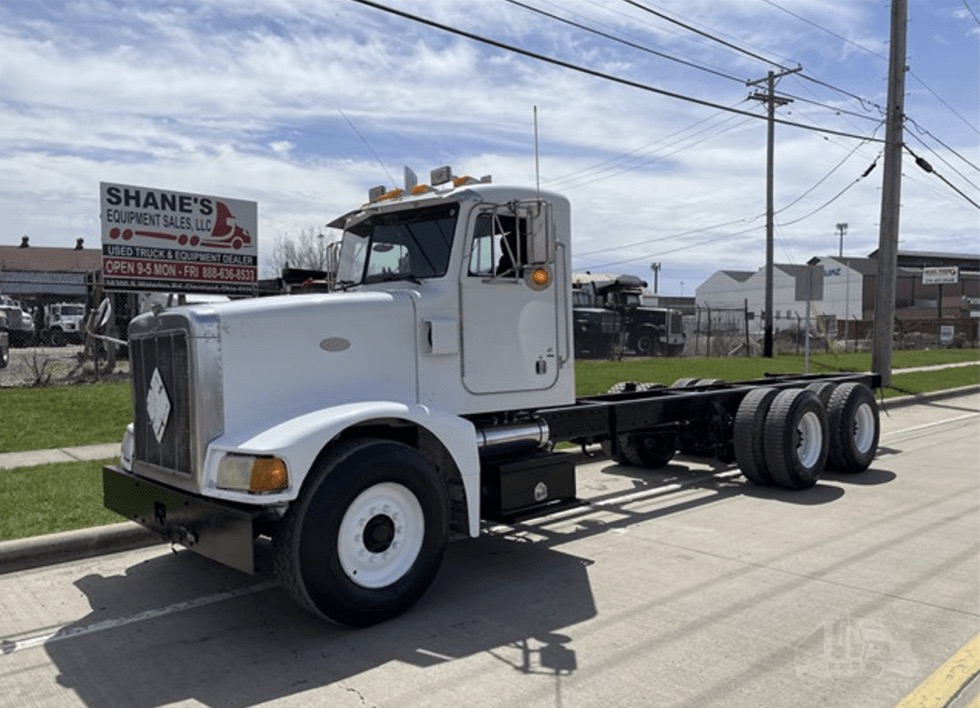
Peterbilt Model 377
Both Models 375 and 377 released around the same time in 1986. The two trucks were very similar, though the Model 377 offered a sleeper option, making it the more popular. Model 377 also had a more sloped hood. Model 377, Model 378, and Model 379 had the same cabs. Model 377 featured a setback axle (set-forward axles were also available), which made Model 377 more specialized– and made servicing the Model 377 more difficult. Compared to Model 378, Model 377 was considered the “working man’s truck.”
Many internet sources list 2005 as the final year of production for the Model 377, but we’ve never seen a VIN more recent than 1999. Until we have evidence to the contrary, we hold that 1999 was the last year the Peterbilt Model 377 manufactured.
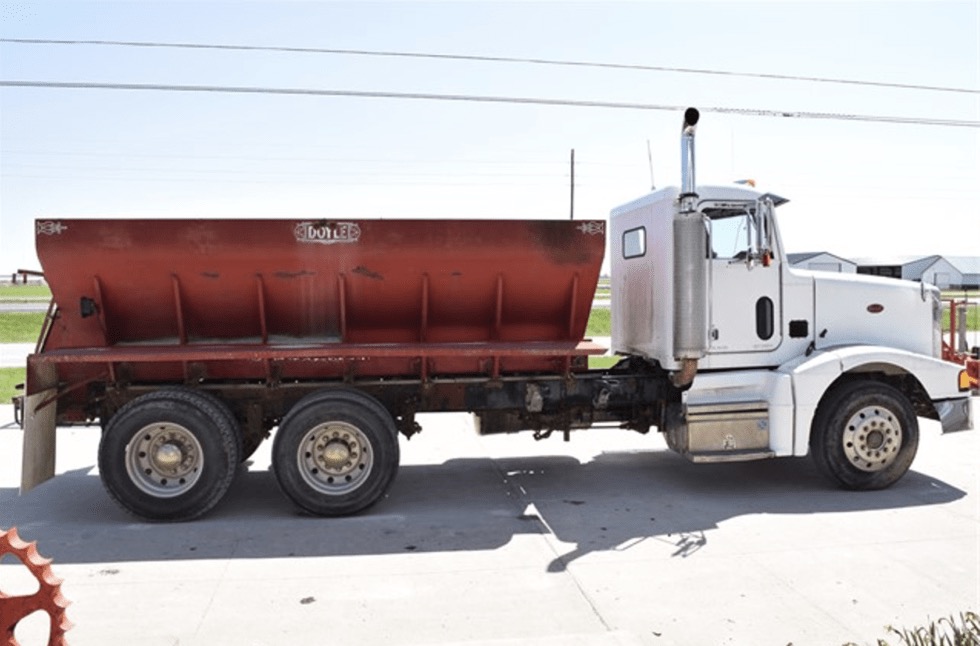
Peterbilt Model 378
Manufactured in 1986, model 378 is considered the “little brother” of Model 379. Model 378 featured a fiberglass hood compared to the Model 379’s aluminum hood. The other significant difference was that Model 378 was only available in a 119″ bumper-to-back cab measurement, which meant it had a shorter hood. The steer axle in Model 378s can set back or forward. The Peterbilt Model 378 was manufactured in 2007.
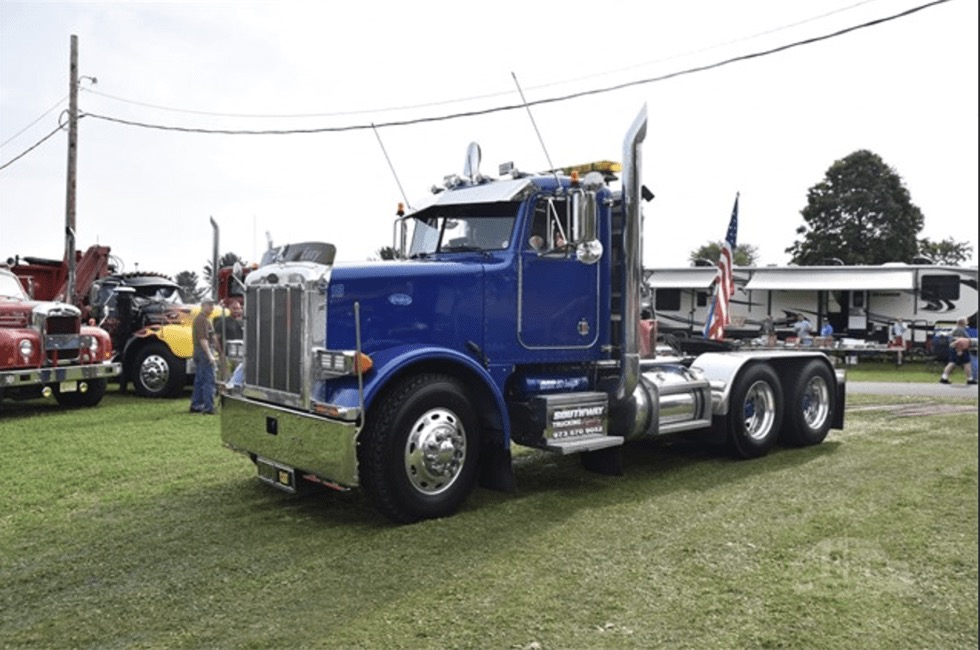
Peterbilt Model 379
First manufactured in 1987, model 379 is perhaps the most well-known truck model of all time. Model 379 was a conventional cab truck designed primarily for highway use. It quickly became the truck of choice for owner-operators who found numerous ways to customize the vehicle.
This model featured an unprecedented bumper-to-back cab length of 127″. Sleeper configurations were also available, ranging from 36″ to 144″. Peterbilt Model 379 was the flagship model for the Peterbilt company and finally discontinued in 2007.
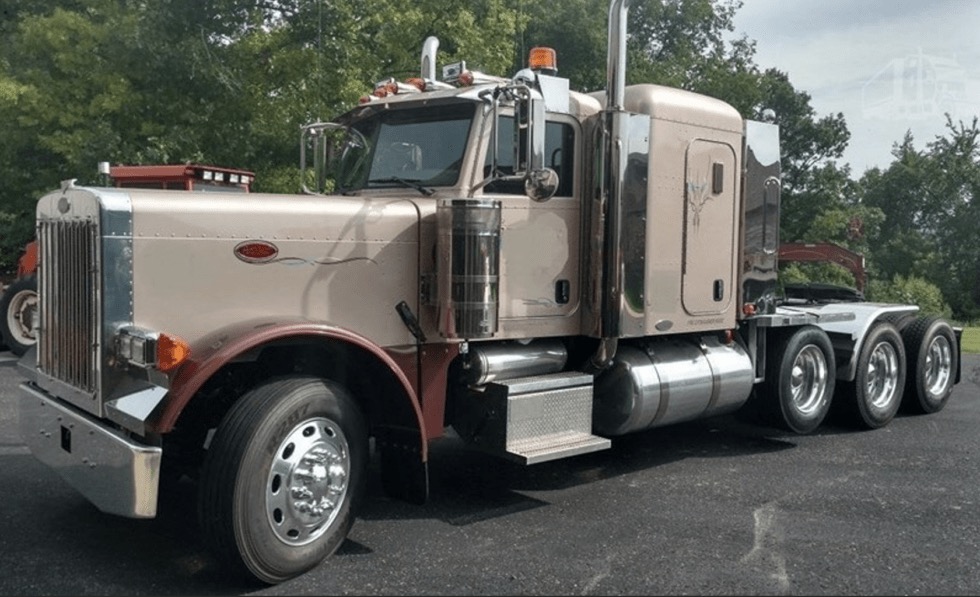
Peterbilt Model 382
Entering the market for the 2011 model year, model 382 was released. Model 382 was designed for regional and shorter haul applications and was only available in a day cab configuration. Model 382 was touted as having outstanding maneuverability, aerodynamic styling, and ease of service. Originally, Model 382 was only available with the Cummins ISL and ISL G (compressed natural gas) engines. They later made for the PACCAR PX9 (the same engine as the Cummins ISL).
Model 382 could be either a Class 7 or Class 8 truck, although the Class 8 was commonly referred to as a “Baby 8” since it was on the lower end of capacity compared to “normal” Class 8 trucks. Model 382 also featured a 111″ bumper-to-back of cab measurement, which made for a smaller, more compact design. The last VIN we have found for a Peterbilt Model 382 dates to 2016.
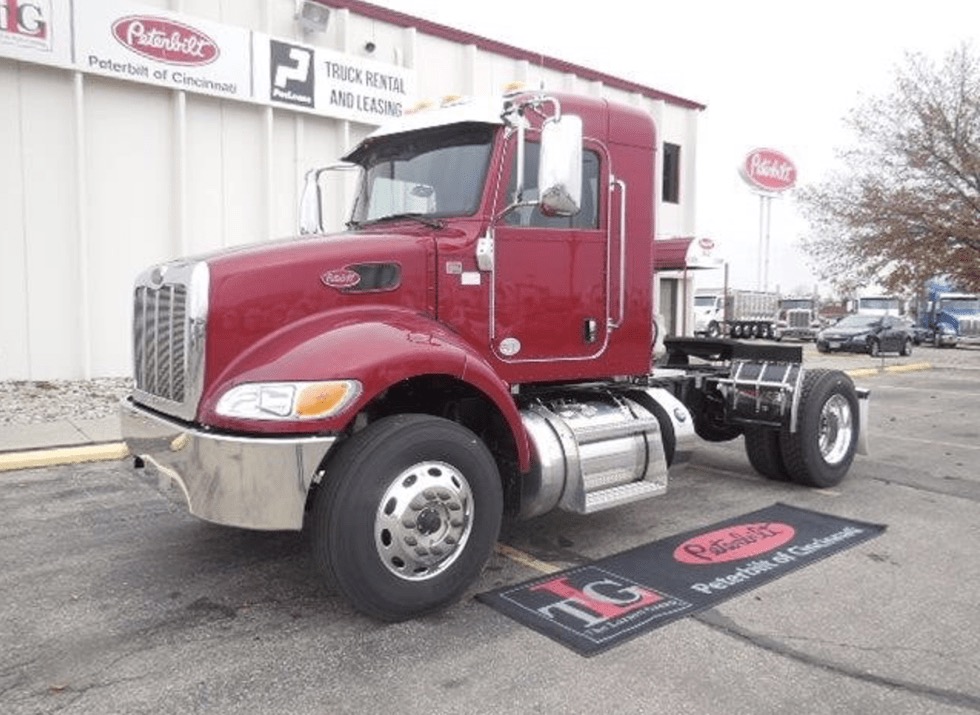
Peterbilt Model 384
Peterbilt’s model 384 was named the American Truck Dealers (ATD) Commercial Truck of the Year in 2010 after being released in 2008. Model 384 intended for owner-operators running shorter or dedicated haul loads who wanted a truck with better fuel economy. Model 384 was the brother of Model 386, the two models being very similar. Model 384 featured a shorter bumper-to-back of cab measurement (116″), allowing for better maneuverability.
Being lighter than previous models, modek 384 increased fuel economy and hauling capacity. Model 384 never manufactured with an engine more prominent than the PACCAR MX13. This meant they could run on Cummins ISX12, ISX12 G, ISX12 N, and ISM, as well as other engines in that weight range. The Peterbilt Model 384 last manufactured for the model year 2016.
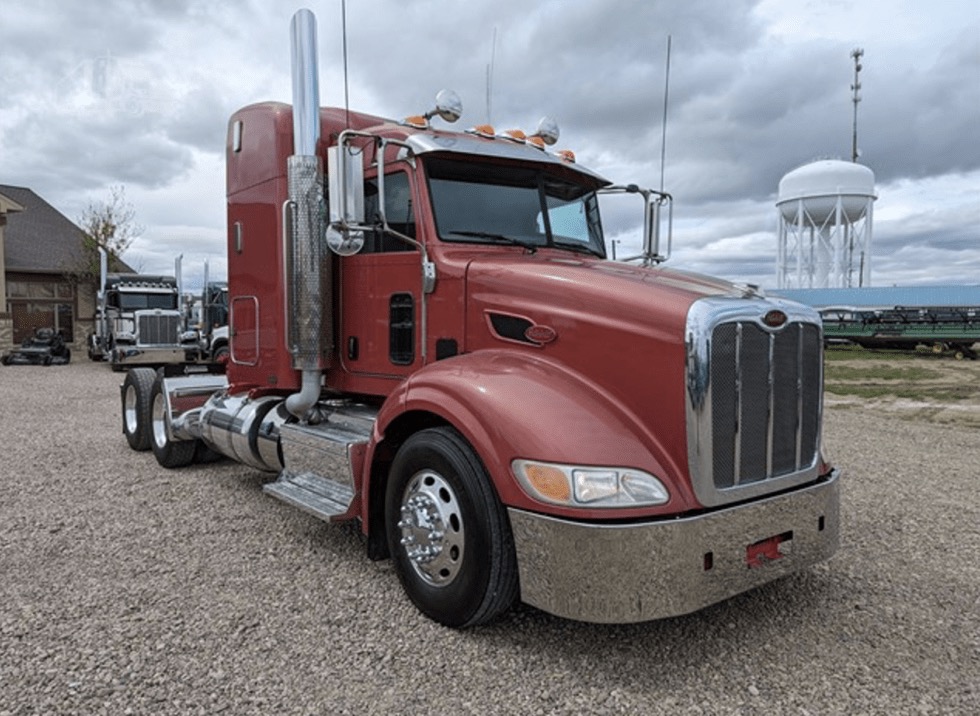
Peterbilt Model 385
In the 1996 model year, model 385 originally included options for smaller 12.0L and lower engines like the Cummins M11, Caterpillar 3176, and Caterpillar C12. Available mainly as a Class 8 truck, Model 385 was designed as a short-haul regional truck or for use in lighter-duty vocational setups.
Originally, Model 385 could be specced light enough in single drive axle configuration to make it a Class 7. Later, larger engines like the CAT C15 were available as well. The Peterbilt Model 385 discontinued after the 2007 model year.
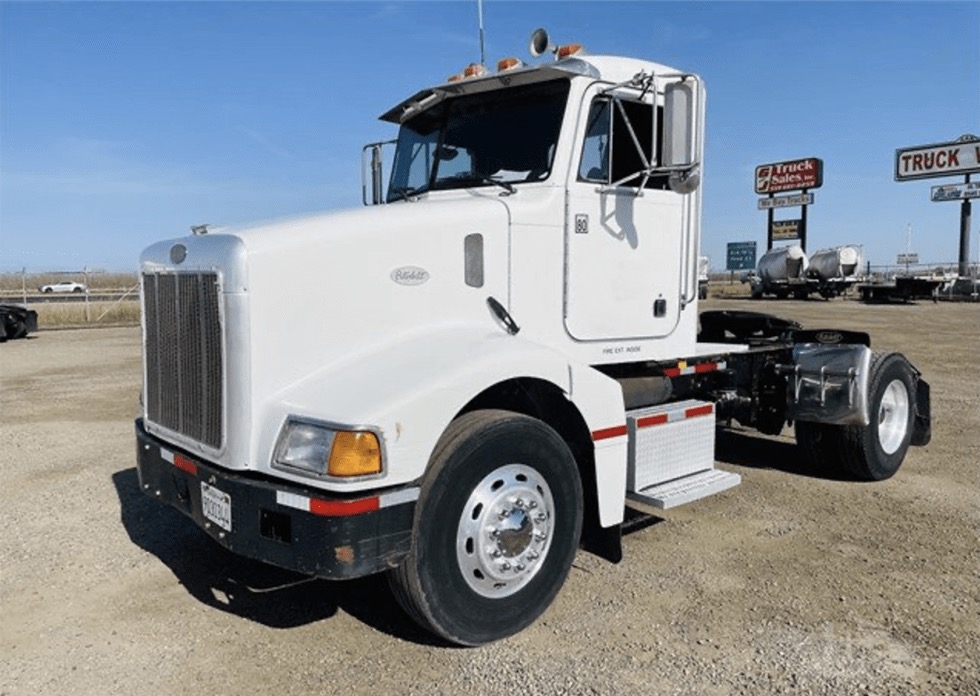
Peterbilt Model 386
Introduced in the model year 2006, the Peterbilt model 386 made headlines. Though very similar to Model 379, Model 386 featured a setback steer axle and a shorter, more aerodynamic hood. The two models had almost identical cabs, but Model 386 aimed at extended and short-haul operations looking for an economical option other than owner-operators like Model 379.
Model 386 was available as a Class 8 truck, and most ran on standard engines of the era, such as the Caterpillar C15 and Cummins ISX and X15. The Peterbilt Model 386 last manufactured in the model year 2016.
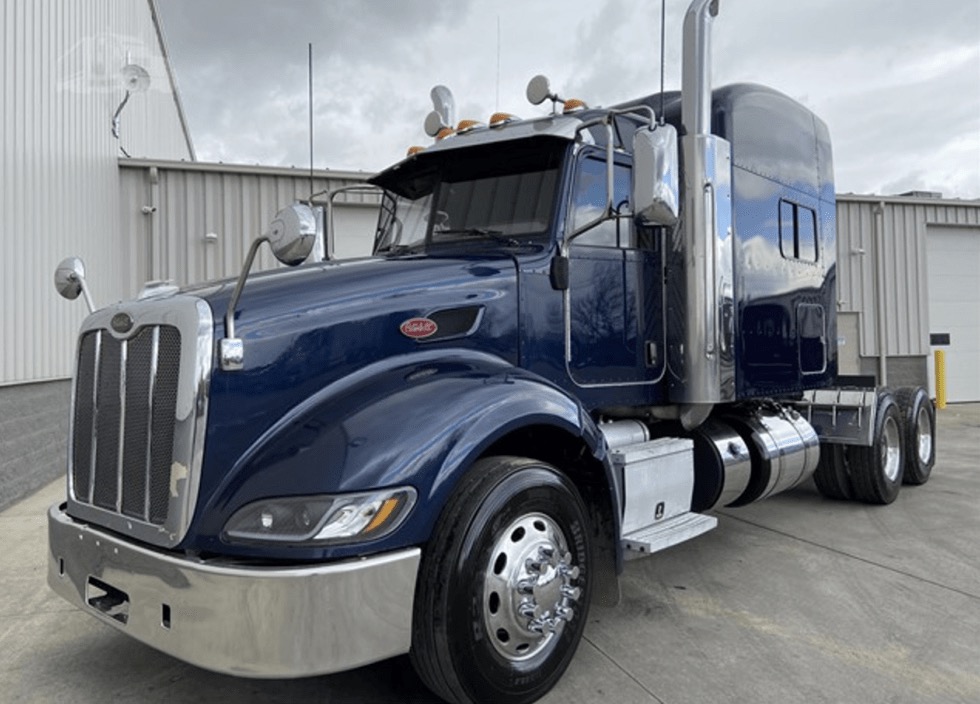
Peterbilt Model 387
Announced in 1999 and put into production in 2000 came the massive Peterbilt model 387. Model 387 was a giant aerodynamic long-haul truck from Peterbilt at that time. It featured a more dramatically shaped hood and fender design, which customers either loved or hated.
The revamped design was more than just superficial, allowing for better aerodynamics and fuel economy while providing better visibility. For Peterbilt customers who wanted fuel economy in a long-haul truck, the Peterbilt Model 387 was their truck of choice. Model 387 discontinued in the model year 2017.
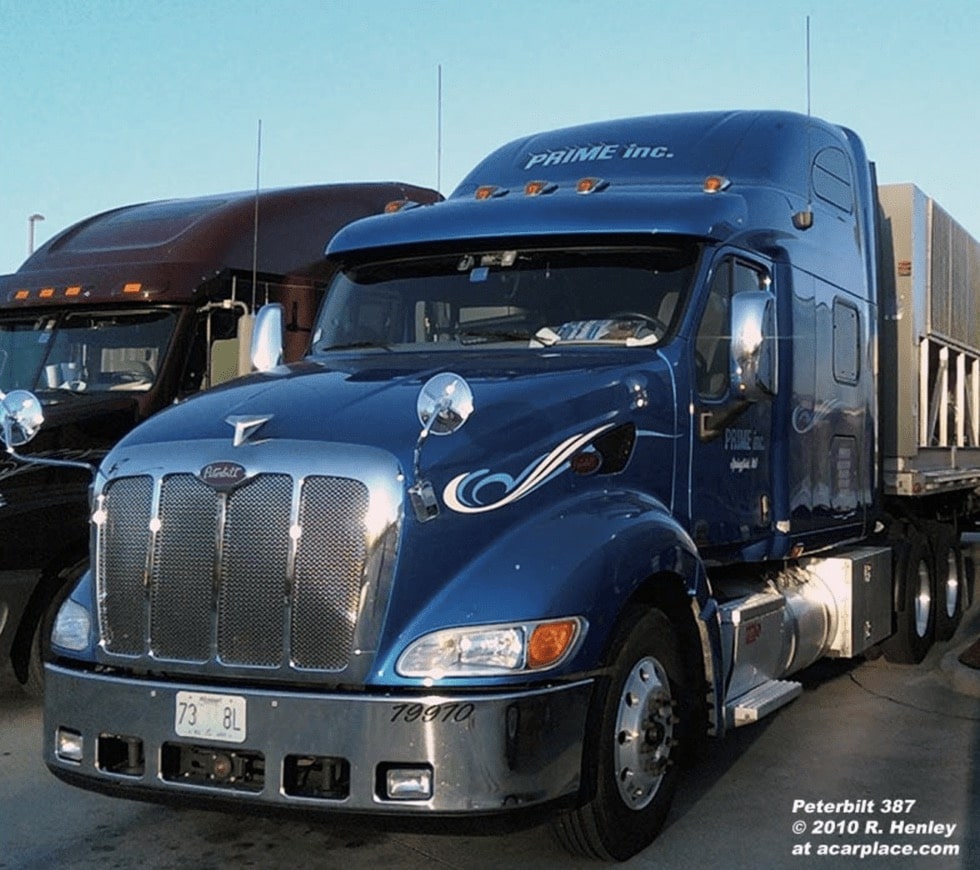
Peterbilt Model 388
Arriving in the model year 2008 came Peterbilt model 388. Model 388 is very similar to Model 389. Most non-truckers would find the two indistinguishable. However, the two models have different headlights and cab hood lengths, and the Model 388 sits slightly higher off the frame rail. Model 388 also featured a 123″ bumper to back of cab measurement and an aluminum hood in the Peterbilt tradition. Peterbilt discontinued Model 388 after the 2015 model year.
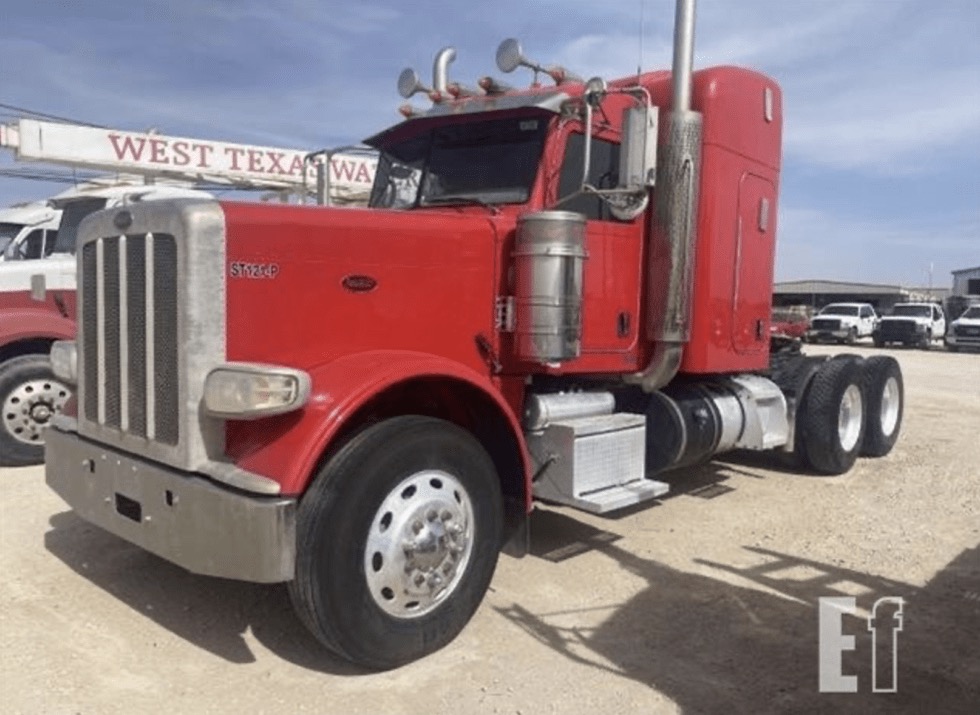
Peterbilt Model 389
Beginning production in 2008 , Peterbilt released the model 389 and is still in production today. Model 389 replaced the iconic Model 379 and was engineered to combine cutting-edge technology with classic Peterbilt style. The model 389 features a long nose hood, giving it its super-long bumper-to-back cab measurement of 131″.
The interior features up-to-date electronics like SmartNav and a 7″ touch screen. More often than not, Model 389 comes equipped with the most extensive available 15.0L engines, but you can also find the 13.0L ones.
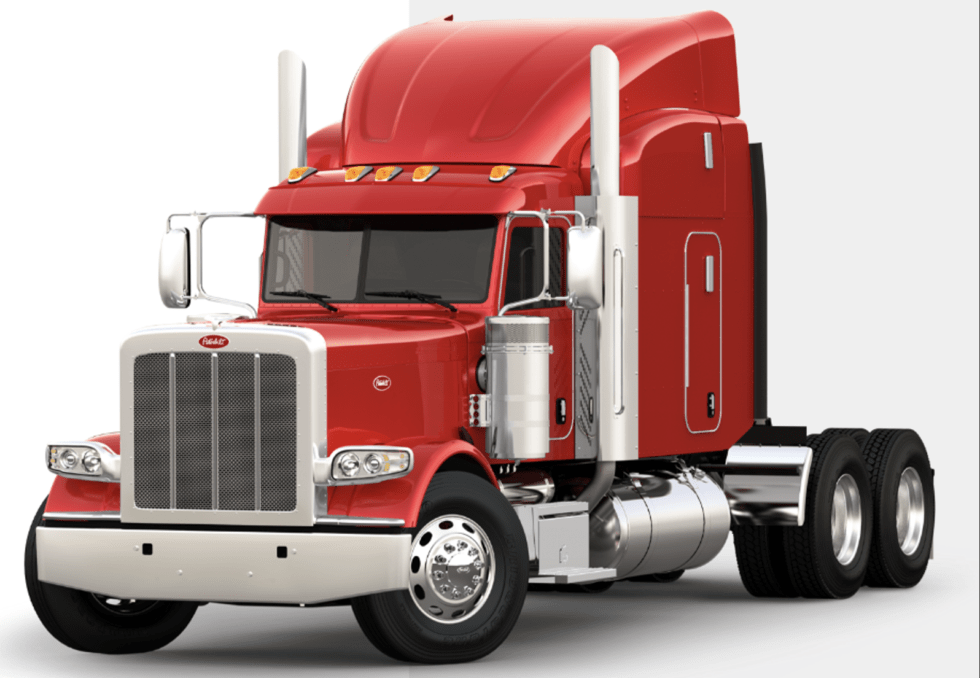
Peterbilt Model 520
In 2017, the 520 made its debut. Model 520 is the most current option available for waste haulers. Designed to operate from the left or right seat, the 520 includes dual controls for parking brakes, an HVAC system, and stereo. Model 520 also offers a wide variety of diesel and compressed natural gas engines. Additionally, the Peterbilt Model 520 is now available as an electric truck.
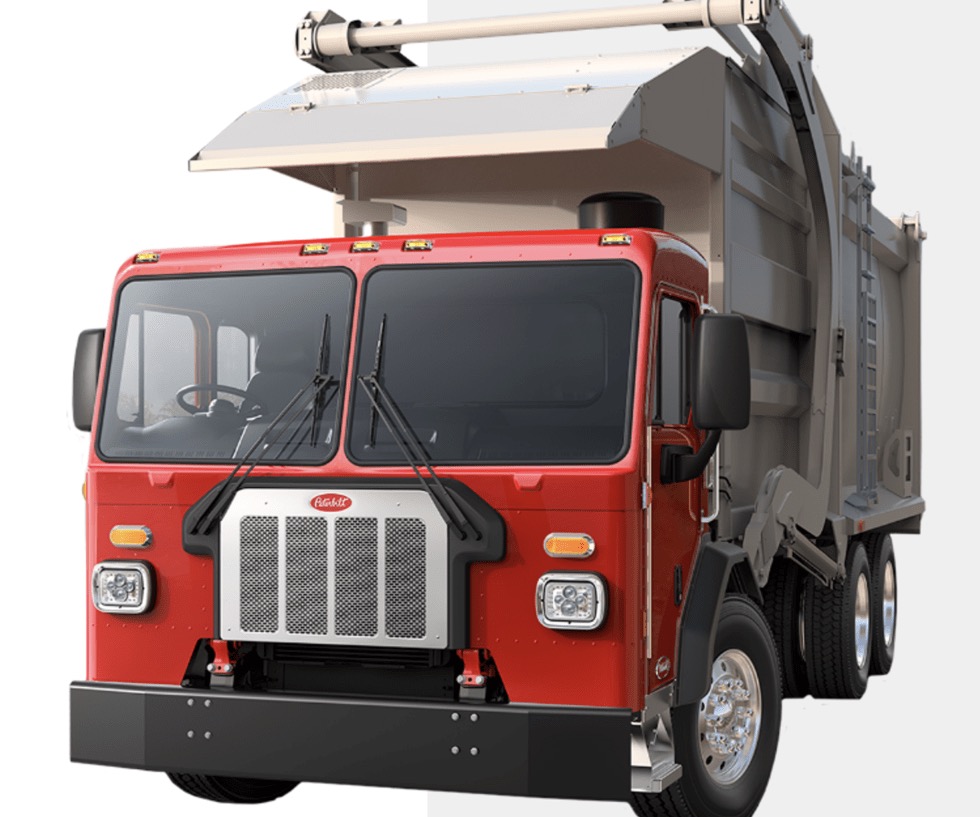
Peterbilt Models 535 and 536
The Peterbilt Model 535 (Class 5) and Model 536 (Class 6)are trucks designed for Class 5 & 6 non-CDL operations. They are typically geared towards the lease, rental, & towing markets. The trucks come with a BBC of either 107” or 109”, which basically means there are two different hood lengths and two different roof heights. Both trucks feature the Paccar PX9 engine which has horsepower ranges from 200 to 380 depending on if its in the Model 535 or the Model 536.
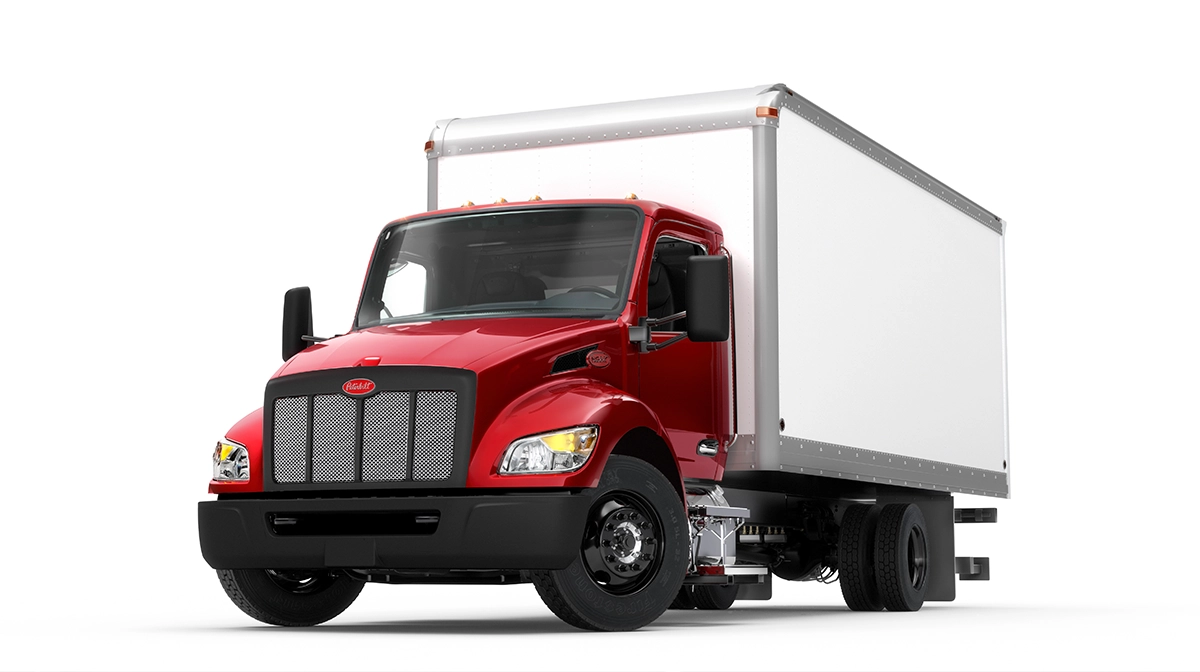
Peterbilt Models 537 and 548
Available with model year 2022, the Peterbilt Model 537 & 548 are versatile trucks built for the vocational industry. Using the industries latest multiplex electrical systems they can accommodate virtually any body configuration. The Model 537 is a Class 7 truck with engine horsepower from 200 to 380 powered by the PACCAR PX7 or PX9 engine. You can also get the Cummins L9N or B6.7N for the natural gas alternatives. The Model 548 is a Class 8 has the same engine options but at a higher horsepower ranges and larger axle options.
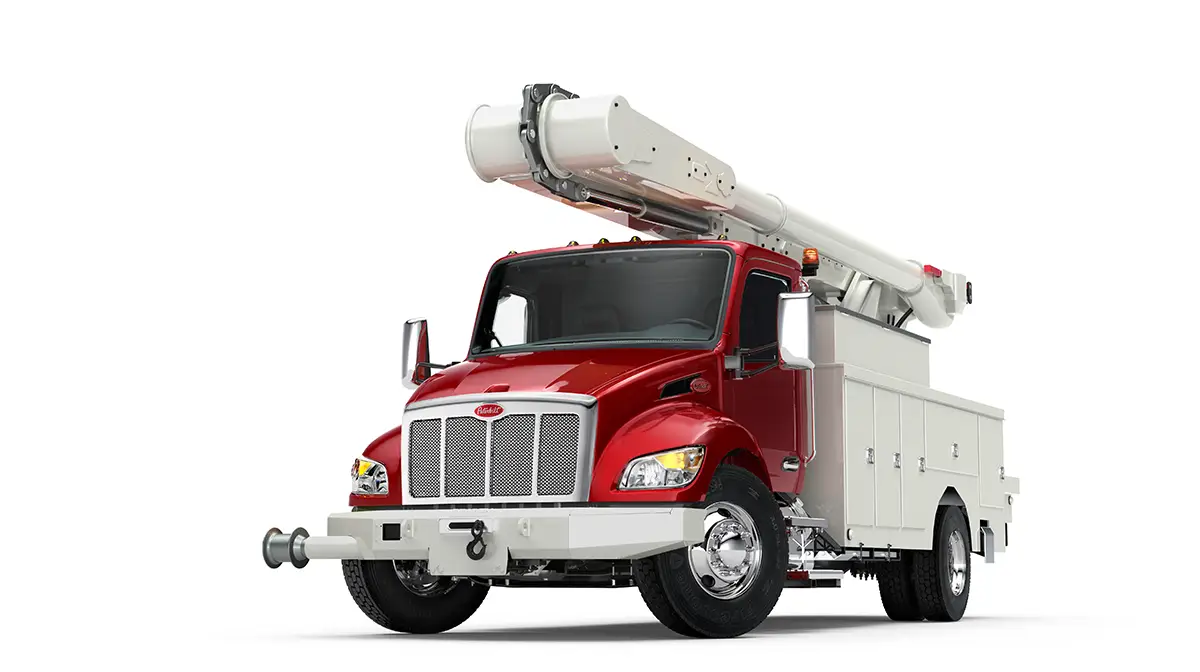
Peterbilt Model 567
Back in 2014, model 567 reintroduced after having been out of production for over a decade. It remains in production today and positions itself as a Class 8 vocational truck (dump trucks, boom trucks, fuel tanks). You can order this truck with 15.0L or 13.0L engine options and day cab and sleeper configurations.
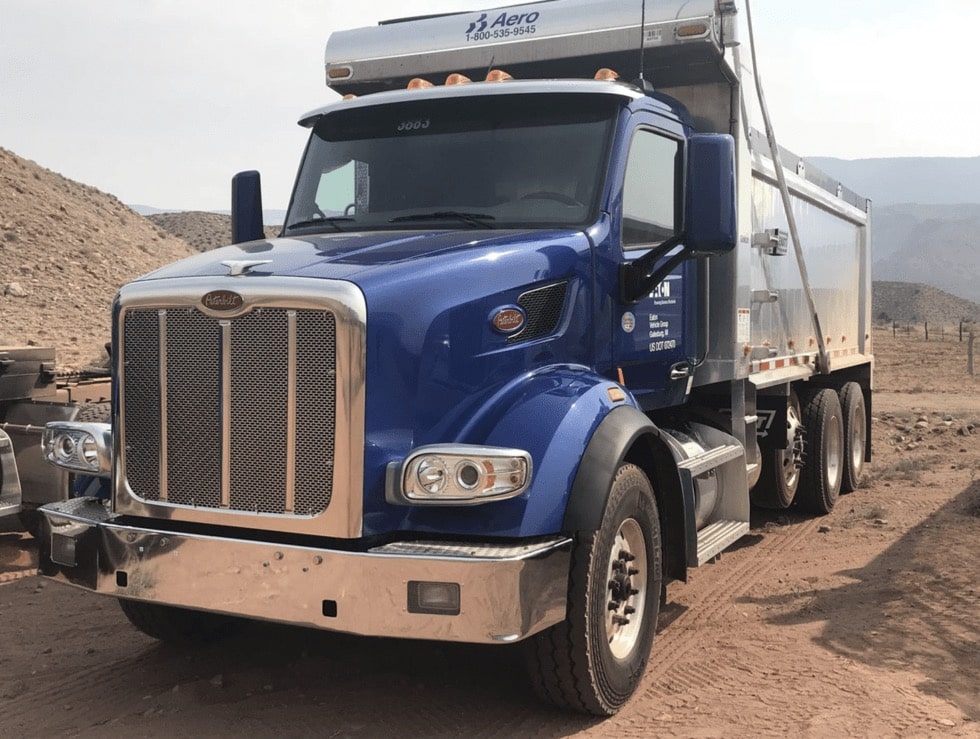
Peterbilt Model 579
Launched in 2012, model 579 replaced model 567. Still in production today, the Model 579 has been touted as setting the industry standard for technology, fuel efficiency, and driver comfort. Model 579 featured a brand-new digital dash, improved safety equipment (such as lane-keeping assist), and PACCAR powertrain options. The Model 579 is well-positioned as the premiere truck choice for fleets due to its enhanced emphasis on fuel efficiency.
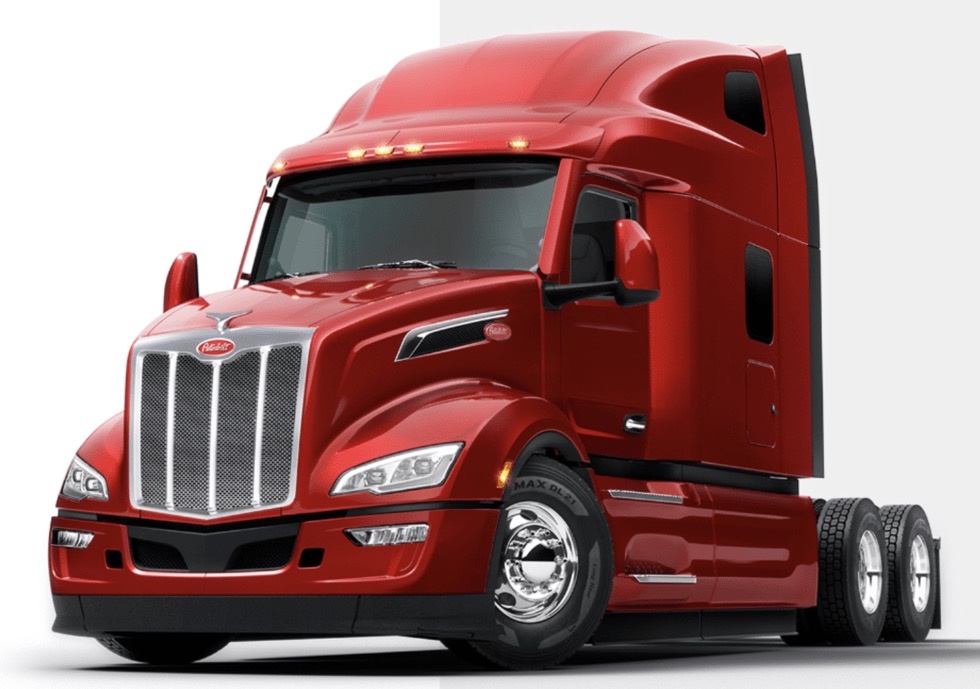
Peterbilt Model 587
First made available in 2012, the Peterbilt truck model 587 introduced. Model 587 replaced the Model 387 and offers day cab or sleeper configurations. More aerodynamic and fuel-efficient, it gears toward long-haul fleets and owner-operators. Peterbilt made several 13- and 15-liter engines available for the Model 587, such as the Cummins ISX, the PACCAR MX13, and the X15. Model 587 last produced in the model year 2018.
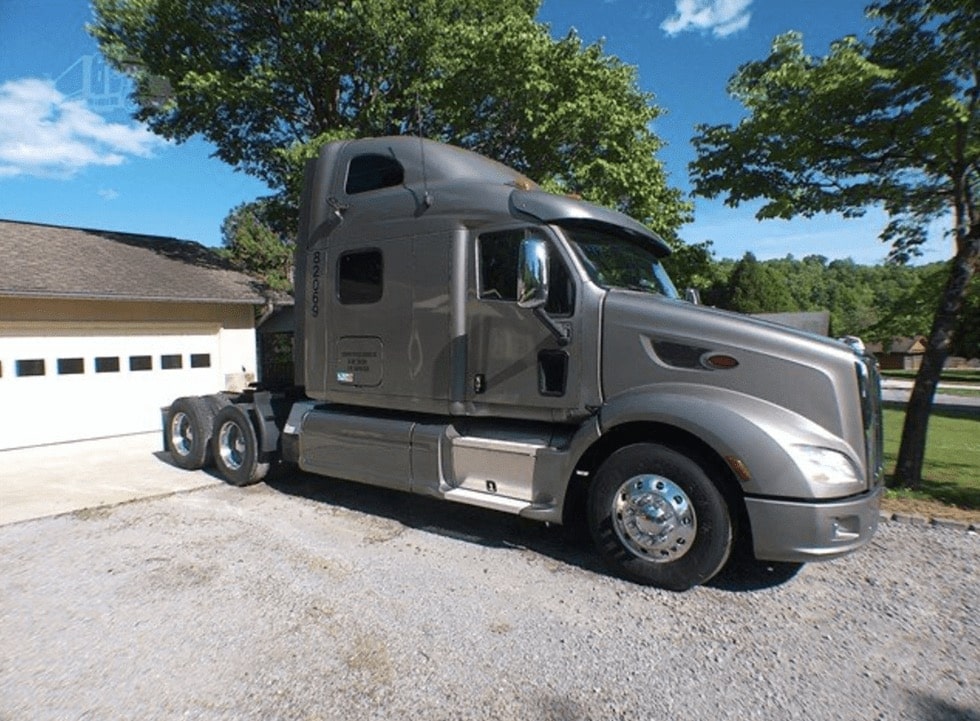
Peterbilt Model 589
The Peterbilt Model 589 replaces the iconic Model 389 starting with model year 2024. The Model 589 features the styling of the classic Peterbilt including an aluminum hood with 121” or 131” BBC., dual stainless air cleaners, wrap-around aluminum bumper, and other such features. It can be in day cab or sleeper configuration ranging from 44” to 80”. Engine powertrain options at launch include the PACCAR MX13 engines and the Cummins X15 engine. This is Peterbilt’s flagship model truck designed for owner operators and fleet operations looking for a top-tier model truck.
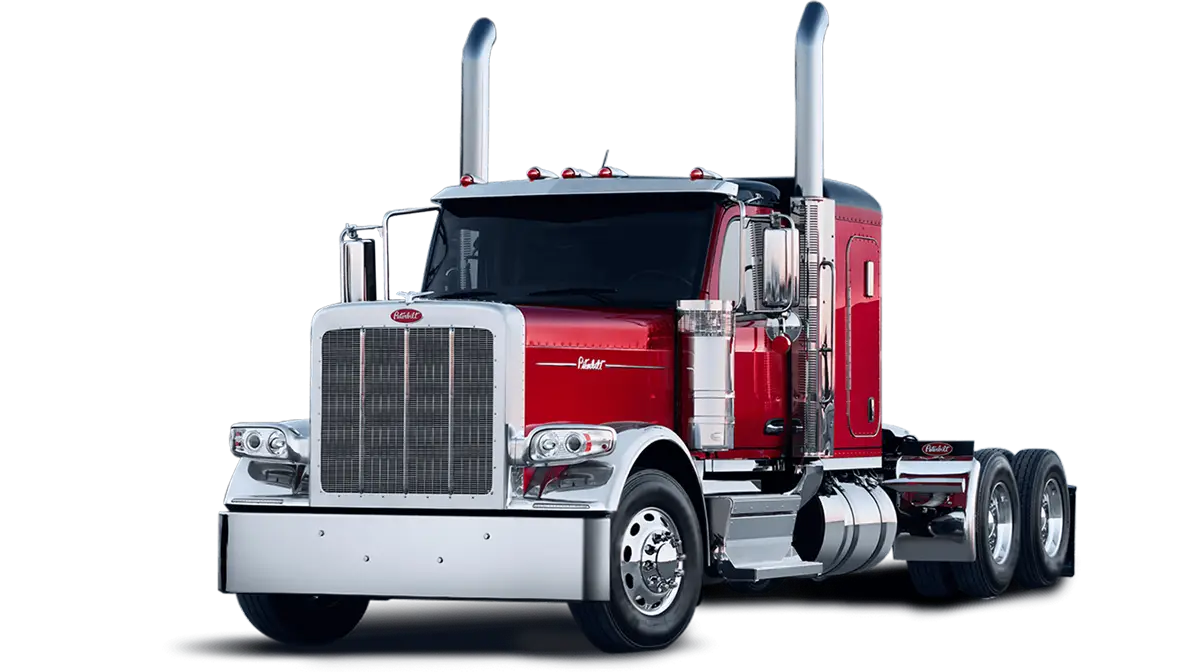
Summary
After three decades, there are a lot of facts about Peterbilt truck models to keep track of. Even the most thorough research may miss something or get something incorrect. If we made a mistake – or if you’d like to share your thoughts or stories about Peterbilt trucks – comment below! We always love to hear from our customers!
Need to diagnose or repair a Peterbilt truck? Diesel Laptops offer a vast range of diagnostic tools, repair information, parts information, and training! How can we help you today?
| Model | Year Started | Year Ended | Weight Class |
| Model 210 | 2013 | 2015 | Class 6 |
| Model 220 | 2013 | Current | Class 6 & 7 |
| Model 320 | 1987 | 2018 | Class 8 |
| Model 325 | 2008 | 2021 | Class 5 |
| Model 330 | 1995 | 2022 | Class 6, 7, & 8 |
| Model 335 | 2005 | 2010 | Class 6, 7, & 8 |
| Model 337 | 2010 | 2022 | Class 6 & 7 |
| Model 340 | 2007 | 2010 | Class 8 |
| Model 348 | 2010 | 2022 | Class 8 |
| Model 357 | 1986 | 2007 | Class 8 |
| Model 362 | 1981 | 2005 | Class 8 |
| Model 365 | 2007 | Current | Class 8 |
| Model 367 | 2007 | Current | Class 8 |
| Model 375 | 1988 | 1996 | Class 8 |
| Model 377 | 1986 | 1999 | Class 8 |
| Model 378 | 1986 | 2007 | Class 8 |
| Model 379 | 1987 | 2007 | Class 8 |
| Model 382 | 2011 | 2016 | Class 7 & 8 |
| Model 384 | 2008 | 2016 | Class 8 |
| Model 385 | 1996 | 2007 | Class 7 & 8 |
| Model 386 | 2006 | 2016 | Class 8 |
| Model 387 | 2000 | 2011 | Class 8 |
| Model 388 | 2008 | 2015 | Class 8 |
| Model 389 | 2008 | 2025 | Class 8 |
| Model 520 | 2017 | Current | Class 8 |
| Model 535 | 2022 | Current | Class 5 |
| Model 536 | 2022 | Current | Class 6 |
| Model 537 | 2022 | Current | Class 7 & 8 |
| Model 548 | 2022 | Current | Class 7 & 8 |
| Model 567 | 2014 | Current | Class 8 |
| Model 579 | 2012 | Current | Class 8 |
| Model 589 | 2024 | Current | Class 8 |
Learn more about our repair information database and get access to all the repair information you need to perform quality repairs on Mack trucks and more! Schedule a demo today and get access to a FREE 30-Day Trial of our Diesel Repair Pro Plan!

